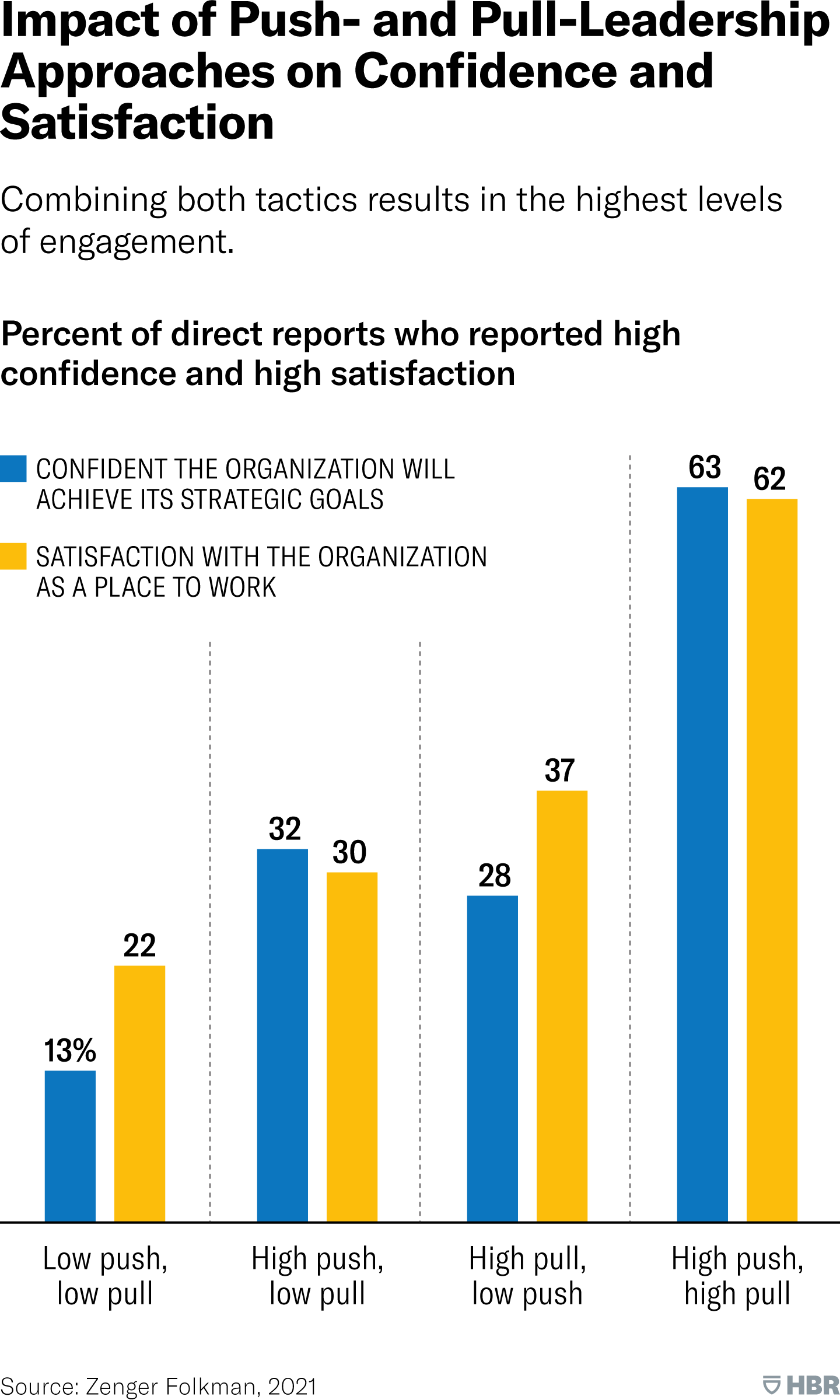
Crab Mentality? Push or Pull? Insights For Leading People

While talking with a friend at a networking event, we both observed and commented on the crowds before us, quickly stimulating a conversation between the two of us about people and leadership.
What is effective leadership?
Why do people resist leaders?
And how do we optimally lead people that follow us?
Perhaps crabs can help us.
The Crab Mentality Story
If you've not heard the story of the crabs or the concept of 'crab mentality' ("if I can't have it, neither can you") here is a quick recap.
When people go fishing for crabs with a bucket, they say bringing a lid for the first crab is vital. The reason is that the first crab will attempt to crawl out of the bucket and will most likely succeed. But, once the fisherman catches the second crab, they no longer have to keep it covered because the other crabs in the bucket will keep the others from crawling out. When any crab tries to get out, the other crabs pull the attempting escapee down, which ensures their collective imprisonment and a good catch for the fisherman.
A Political Example of Crab Mentality
This concept often manifests in social life when people inside an in-group speak out against their own group or decide to (or consider wanting to) leave the group. In the most extreme cases, like cults or political extremists, people that are wanting to leave or have left, are harshly chastised and often villainized. At a minimum, they are shamed.
Nick Catoggio, in a 2024 political article, highlights this dynamic playing out in the Republican party after Donald Trump was convicted of 34 felonies. Former Maryland governor Larry Hogan, who is a moderate Republican, made a public statement that people should respect the verdict and the legal process. Hogan immediately received a pile-on from Republicans about how his senate term was finished, because of his mild statement that was not a defense of the former president.
Here's what Nick said about the situation in his article.
"But I think they’re mainly making an example of Hogan because they’re nervous that the burst of sympathy for Trump among good-faith Republicans won’t last. They need to try to “lock in” those voters by making outrage over the verdict a partisan litmus test of such immense gravity that they’re willing to forfeit a Senate seat to punish someone for failing it."
Terror, intimidation, and bluster are ways to get group members who are considering thinking about leaving the cage, to conform, even when it's costly for the group. It’s also a reason to punish the moderate members of a group who are pulling people out of line. This strategy works for those who have something to gain (or lose) if they don’t stay in line and for those trapped in their group affiliation identities (because of the risk of alienation).
I can relate to this idea of crab mentality because I am a Remnant Republican who has had friends and family put a lot of pressure on me to conform to their decision to conform to Republicans fully aligned with Trump, even when I see that group as deeply corrupted. Often, when we want something different than our in-group, it creates a contrast. And as Jordan Peterson says, every ideal is a judge.
Resistance: Push v Pull
When we are in the bucket (situation, trouble, etc...) with others, and don't want to leave, we tend to pull each other down.
So, why when we help others out of the bucket do they resist so heavily?
My friend, at that previously mentioned networking event, put his hand out and invited me to do the same. He began pushing on my hand and I immediately, out of instinct, pushed right back. He then put his hand out again, face up. I put my hand out, and he grabbed it and began to walk away. I immediately began to follow. These were very similar actions but resulted in two completely different responses.
Push versus pull.
When we push people to move forward, we establish resistance. If instead of pushing, we choose to open up, cast a vision, move towards it, and invite others along the way, they're more likely to willingly follow. I've heard it said that Reagan is known for having channeled many of America's grievances into positive and productive ends.
So, pull leadership is important.
But, there is more to the story. Let's dive into the research on the topic.
The Impact of Push versus Pull Leadership
Based on research from Zenger Folkman, we can get a deeper understanding of Push and Pull leadership and understand the outcomes created by both and how we actually want a combination of the two.
First, here is how they define both approaches; push and pull.
Pushing involves giving direction, telling people what to do, establishing a deadline, and generally holding others accountable. It is on the “authoritarian” end of the leadership style spectrum.
Pulling, on the other hand, involves describing to a direct report a needed task, explaining the underlying reason for it, seeing what ideas they might have on how to best accomplish it, and asking if they are willing to take it on. The leader can further enhance the pull by describing what this project might do for the employee’s development. Ideally, the leader’s energy and enthusiasm for the goal are contagious." - Joseph Folkman, To Get Results, the Best Leaders Both Push and Pull Their Teams
That clarity on both styles is helpful for me. By personality and other factors, I tend to gravitate toward being a pull leader, although that's something in me that has changed as a parent; as a father, I need to better embrace my pull leadership style.
Joseph Folkman continues to explore the idea, utilizing the following graphic to demonstrate that a combination of both push and pull leadership fosters the most satisfaction and the most confidence. If you're only going to choose one of the two, pull is more effective than push. Leveraging both is ideal.

This is insightful. High push and pull create the most satisfaction and confidence. High pull and low push come in second, at half of the effectiveness. High push and low pull is third and low push and low pull is the least satisfying and least confidence-building.
The lesson for me is learning how to integrate push and pull leadership and ensure I'm leveraging the benefits of both to move toward the vision and make an impact.
In your life, who are you pushing?
Where could you integrate more pulling to improve satisfaction?
And where in your life are you pulling, but could use some more pushing to increase confidence?
The Hermit Crab Story: An Inspirational Way Forward
One last small story to leave you with. I stumbled upon this and discovered it to be a great contrast to the first story.
On TikTok, user WoahGuo shares another crab story, one that is inspiring and paints a path forward. Leading by example and looking out for others.
"If a hermit crab comes along a big shell, it'll explore it to see if it'll fit. If the shell is too big, it'll wait for up to eight hours as other hermit crabs come along and try it out. As they too realize that it's too big for them, they all cue up next to the shell and then form a line from biggest crab to smallest crab. Then they all wait for the crab that is the perfect fit."
Unlike the crab mentality story, which is about pulling others down who want something different, this hermit crab story is about looking out for the others in our group at the cost of what we want. It's about us looking out for the little guy (the more vulnerable), and making it easy for them to get what they need.
One story is about pulling people down, and this second story is about empowering and equipping others.
Additional Resources
- Read Seth Godin: Push vs. Pull
- Read Darius Foroux: Stop Trying to ‘Convince’ People (Push vs. Pull Leadership)
- Watch Jordan Peterson: Jordan Peterson insight into Columbine Shooter
Hero Photo by Simon Caspersen on Unsplash


